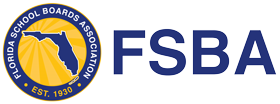Today’s economy demands that all young people develop high-level literacy, quantitative reasoning, problem solving, communication, and collaboration skills, all grounded in a rigorous and content-rich K-12 curriculum. Acquiring these skills ensures that high school graduates are academically prepared to pursue the future of their choosing.
Many state tests, however, continue to mislead the public about whether students are proficient. Parents, students, and teachers deserve transparency and accuracy in public reporting.
Frequently, states’ testing and reporting processes yield significantly different results than the data collected and reported by the National Assessment of Educational Progress (NAEP). While NAEP, the Nation’s Report Card, scores are the gold standard for measuring student achievement and serve as a yardstick for state comparisons, NAEP results are generally not known by students and their families who rely on their state test results to know how they are performing. While no single test can show everything we need to know about how a student is performing in school, test scores along with information about a student’s work in the classroom give families the information they need to know about a student’s progress.






